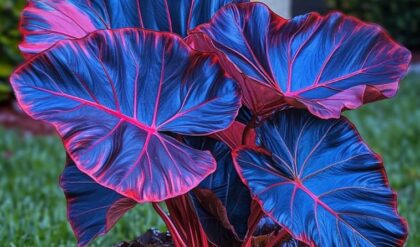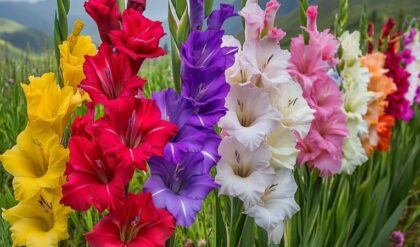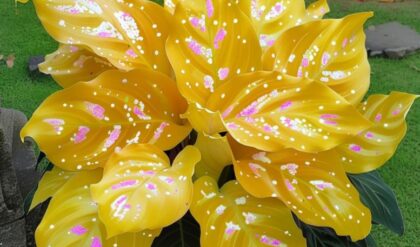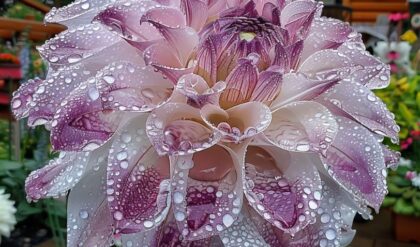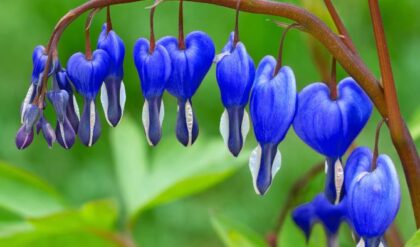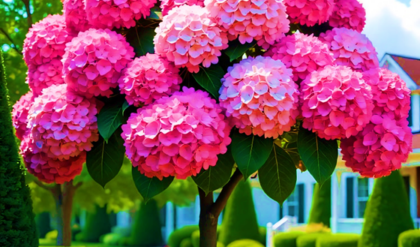The Bird of Paradise, scientifically known as Strelitzia reginae, is not just a plant; it’s a magnificent embodiment of nature’s art, invoking imagery of exotic lands and tropical escapades. Showered with vibrant orange and blue petals, its flowers boldly mimic the grandeur of birds in flight—a testament to the lush biodiversity native to South Africa where this gem thrives most vibrantly in regions such as Natal and Port Elizabeth. Its large, banana-like leaves create a striking backdrop that further emphasizes its ethereal beauty, beckoning onlookers much like a rare celestial event would. Imagine strolling through one’s garden only to be greeted by these surreal flowers who promise to transport you into dreams of far-flung paradises with each glance. Yet, beyond its enchanting aesthetic, the Bird of Paradise demands a conscientious approach to care that harmonizes well with its innate characteristics, making it vital for enthusiasts—be they budding gardeners or seasoned botanists—to understand its intricate needs.
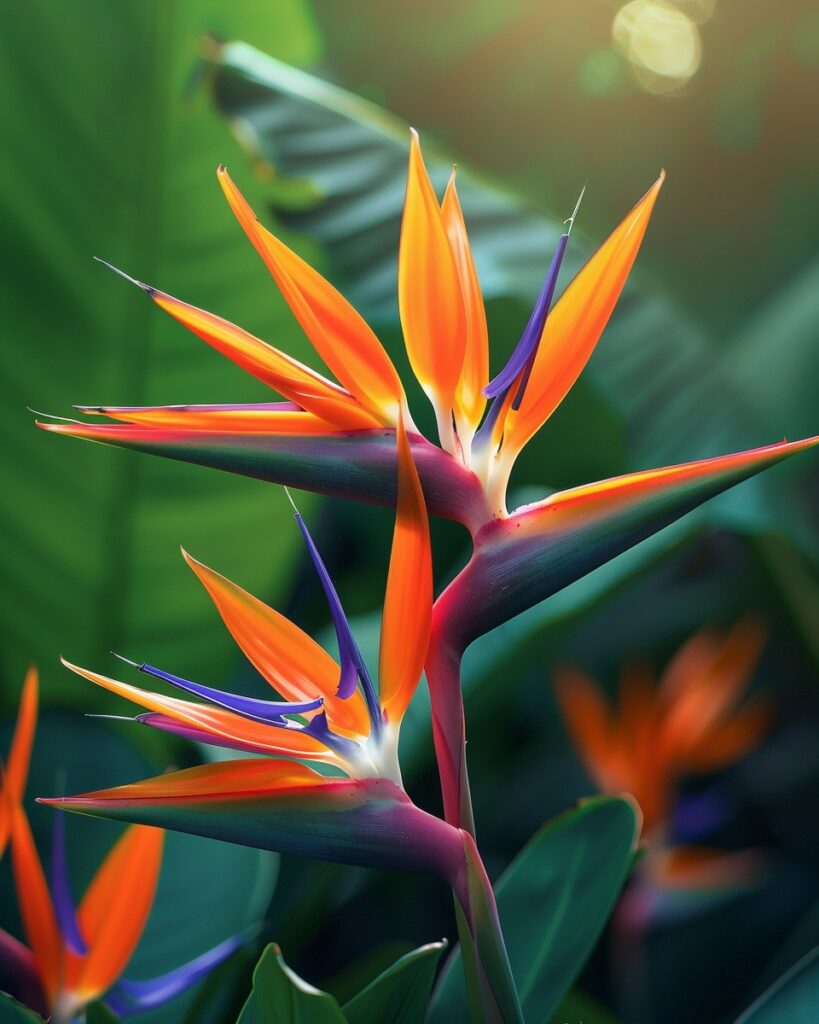
Cultivating the Aesthetics: Ideal Conditions
To cultivate a thriving Bird of Paradise, one must provide conditions akin to a tropical rainforest. These plants flourish in bright, indirect sunlight; ideally, they should bask in at least six hours of daylight daily to emulate their natal habitats. This rays-soaking ritual not only fuels their growth but also enhances their vivid blossoms. The light isn’t mere illumination but a nurturing embrace, akin to how people react when bathed in encouraging warmth, inspiring them to blossom to their fullest potential.
Lighting Requirements
- The Bird of Paradise thrives in bright, indirect sunlight. Aim to provide at least 6 hours of sunlight exposure per day.
- Avoid direct, harsh sunlight, as it can scorch the leaves and degrade the vibrant colors of the flowers.
- Strategically position the plant near a sunny window or in a bright, airy room to ensure it receives the optimal lighting conditions.
Temperature and Humidity
- The Bird of Paradise prefers warm, tropical temperatures, with an ideal range of 65°F to 85°F (18°C to 29°C).
- Maintain consistent temperatures, as fluctuations can stress the plant and inhibit growth.
- Ensure adequate humidity levels, as these plants thrive in environments with 50% to 60% humidity.
- Consider using a pebble tray or a humidifier to increase the surrounding humidity if necessary.
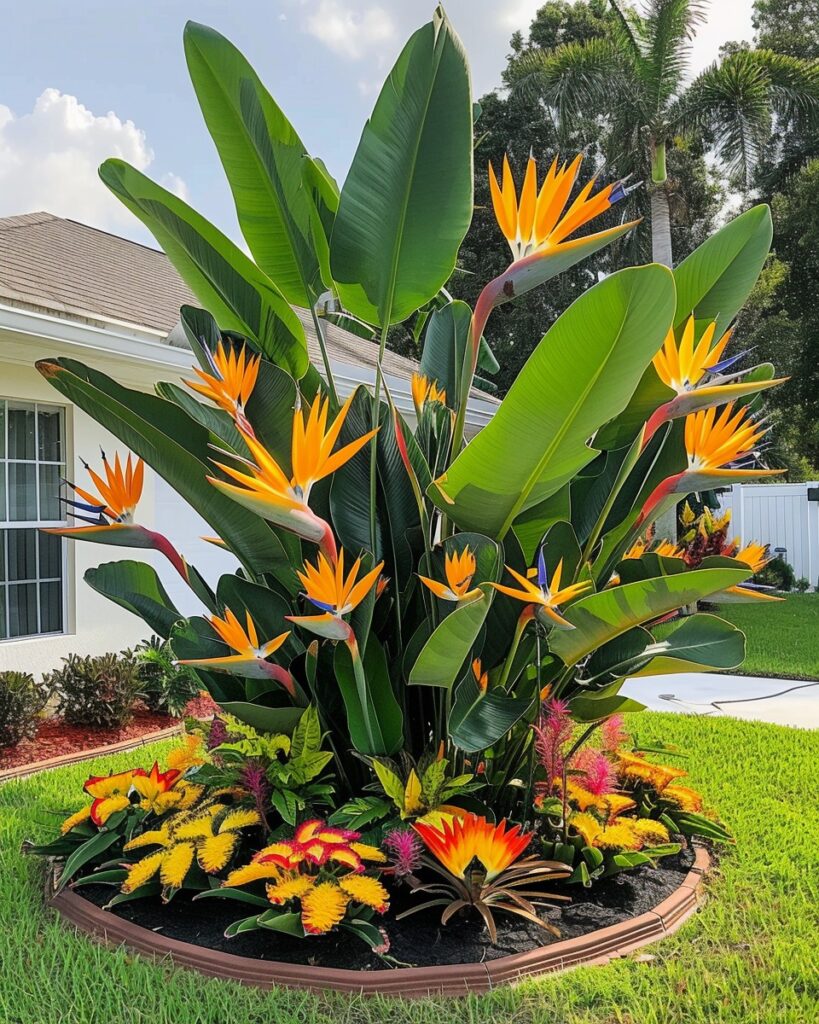
Soil and Potting Requirements
- Use a well-draining, nutrient-rich potting mix specifically formulated for tropical plants.
- Ensure the soil has a slightly acidic pH, typically between 5.5 and 6.5.
- Plant the Bird of Paradise in a container with ample drainage holes to prevent waterlogging.
- Choose a pot that is slightly larger than the plant’s root system to allow for future growth.
The Art of Care: Nutritional Needs
Just as we nourish our bodies with balanced diets, the Bird of Paradise requires a careful blend of nutrients for healthy growth. Integrated nutrient management plays a pivotal role in tailoring the plant’s dietary needs. From nitrogen-rich fertilizers that spur foliage growth to phosphorus which encourages flower development, understanding these nutritional intricacies can significantly impact the health and allure of these stunning plants. One might liken this nutrient balance to composing a symphony—each element must be perfectly orchestrated to produce a melodious result; neglecting any aspect could lead to a tune that falls flat.
Fertilizer Requirements
- Use a balanced, slow-release fertilizer formulated for tropical plants.
- Apply the fertilizer every 2-3 months during the growing season (spring and summer).
- Adjust the frequency and concentration of the fertilizer based on the plant’s growth and any signs of nutrient deficiencies.
Watering Practices
- Water the Bird of Paradise regularly, keeping the soil consistently moist but not waterlogged.
- Allow the soil to partially dry out between waterings, but avoid letting it become completely dry.
- Increase watering during the growing season and reduce it during the winter months when growth slows.
- Pay attention to the plant’s leaves as an indicator of its water needs, looking for signs of wilting or drooping.
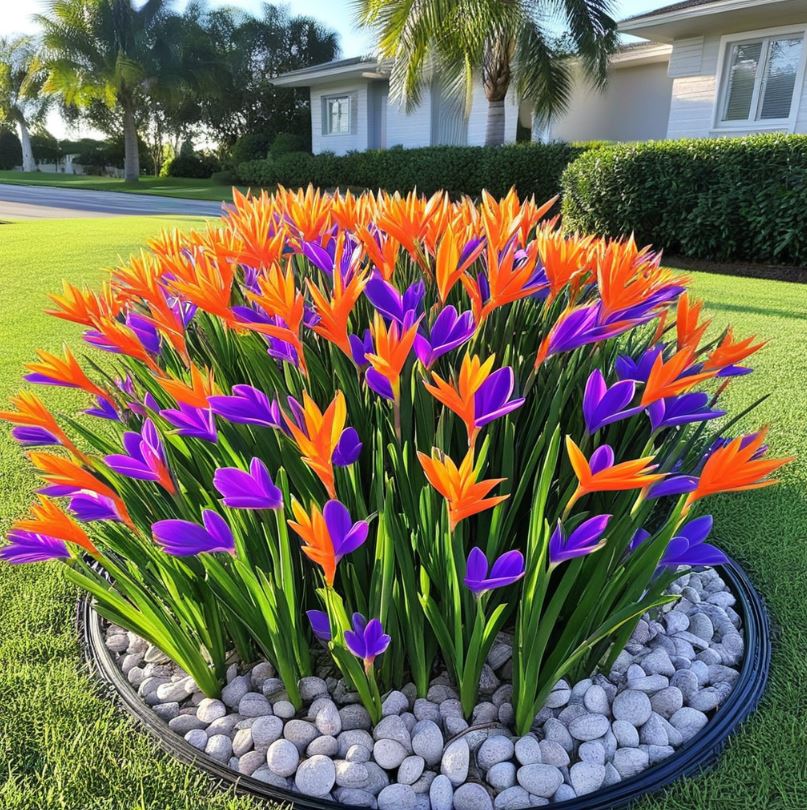
Pruning and Maintenance
- Prune the Bird of Paradise regularly to remove any dead, damaged, or discolored leaves and flowers.
- Use clean, sharp pruning shears to make clean cuts and prevent the spread of disease.
- Deadhead spent flowers to encourage the plant to redirect its energy into producing new blooms.
- Occasionally trim the plant’s large leaves to maintain a tidy, well-groomed appearance.
Cultural Resonance and Symbolism
Beyond botany, Strelitzia reginae holds cultural significance that intertwines with its visual appeal. Named in honor of Queen Charlotte, the bird itself becomes not only a botanical treasure but a symbol of royal admiration. It beckons us to ponder its representation across various cultures. In some societies, the Bird of Paradise symbolizes joy and magnificence, acting almost as a talisman against the mundane. By bringing this enchanting flora into domestic spaces, individuals may find themselves surrounded by an atmosphere rich in vitality and inspiration, igniting creativity and fostering a sense of celebration in everyday life.
Historical Origins and Naming
- The Bird of Paradise (Strelitzia reginae) was named after Queen Charlotte, the wife of King George III of the United Kingdom.
- The genus name “Strelitzia” honors the House of Mecklenburg-Strelitz, which was the royal house of Queen Charlotte.
- The specific epithet “reginae” means “of the queen,” further emphasizing the plant’s royal connection.
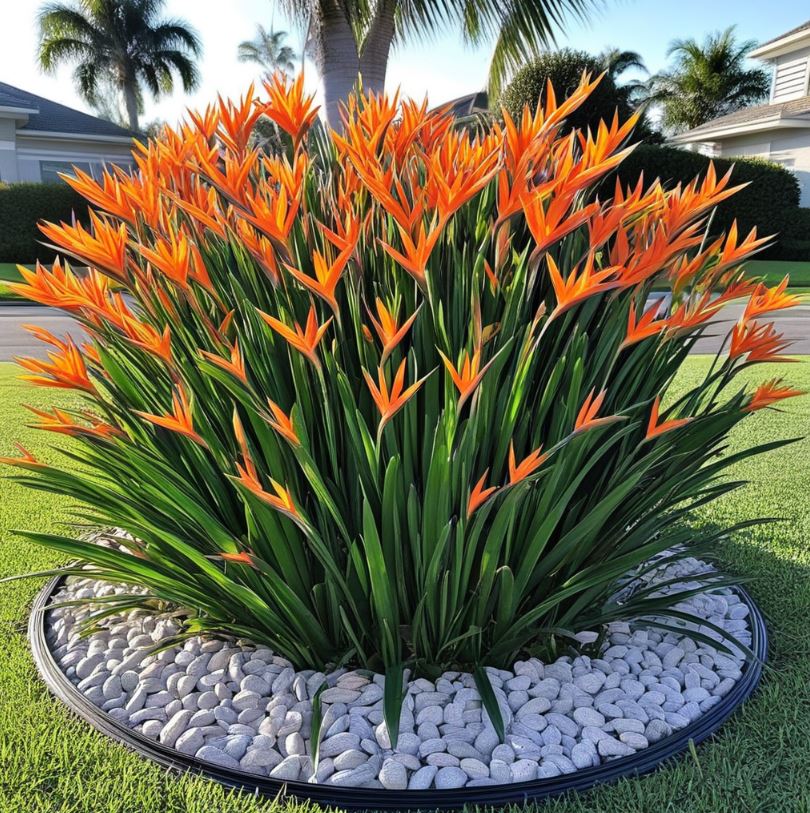
Symbolic Meaning and Cultural Associations
- In many cultures, the Bird of Paradise symbolizes joy, beauty, and paradise.
- It is often associated with concepts of freedom, adventure, and the pursuit of one’s dreams.
- The plant’s striking resemblance to a bird in flight has led to it being revered as a symbol of transformation and the human spirit.
- In some African and Pacific Island cultures, the Bird of Paradise is believed to have mystical or spiritual properties, serving as a talisman or offering to the gods.
Artistic and Creative Inspirations
- The Bird of Paradise has long captured the imagination of artists, designers, and creative minds.
- Its exotic and vibrant flowers have inspired numerous works of art, from paintings and sculptures to textile patterns and fashion designs.
- The plant’s visual elegance and symbolic meaning have made it a popular motif in literature, poetry, and even music, evoking a sense of wonder and escapism.
- By incorporating the Bird of Paradise into their creations, artists and designers have helped to preserve and disseminate its cultural significance.
The Social Aspect: Community Engagement
In today’s interconnected world, sharing the rigors and joys of maintaining a Bird of Paradise isn’t limited to solitary experiences. Social media platforms have transformed the way care tips and personal successes are exchanged, creating communities of enthusiastic green thumbs. For example, Instagram posts featuring these extraordinary plants can evoke a collective appreciation that transcends geographical boundaries, demonstrating how shared admiration and knowledge can inspire one another. Think of these online interactions as a global garden gathering where enthusiasts exchange tales, practices, and perhaps even cuttings of this marvel, thus enriching their lives—and gardens—in unison.

Online Communities and Discussions
- Social media platforms, such as Instagram, Facebook, and online forums, have fostered a thriving community of Bird of Paradise enthusiasts.
- Gardeners and plant lovers share their experiences, tips, and triumphs in caring for these stunning plants, creating a supportive network of knowledge-sharing.
- Through these digital interactions, enthusiasts can learn from each other’s successes and challenges, further enhancing their understanding of the Bird of Paradise’s unique cultivation requirements.
Collaborative Efforts and Exchanges
- Gardeners often engage in the exchange of cuttings, seeds, or even full-grown specimens, allowing the Bird of Paradise to be shared and propagated across different regions.
- Online communities facilitate the organization of plant swaps, sales, and local meetups, enabling enthusiasts to connect with fellow lovers of the Bird of Paradise.
- Collaborative projects, such as virtual garden tours or educational workshops, further strengthen the bond between Bird of Paradise enthusiasts, fostering a sense of community and shared appreciation.
Inspiring and Educating Others
- The vibrant and captivating presence of the Bird of Paradise on social media platforms has inspired many individuals to embark on their own gardening journeys.
- Enthusiasts’ posts showcasing the plant’s growth, blooms, and care routines serve as a source of inspiration and guidance for aspiring gardeners.
- By sharing their knowledge and experiences, seasoned Bird of Paradise growers can help educate newcomers, ensuring the continued appreciation and preservation of this remarkable plant.
Conclusion
In exploring the enchanting world of the Bird of Paradise, those enamored by its beauty will discover layers of meaning—from its alluring appearance and unique care requirements to its cultural significance and societal connections. It serves not merely as an ornamental presence but as a gateway to delve deeper into the intersections of nature, community, and artistry. What other floral wonders lie in wait, capable of igniting passion and intrigue within us? The journey with the Bird of Paradise is just the beginning.
